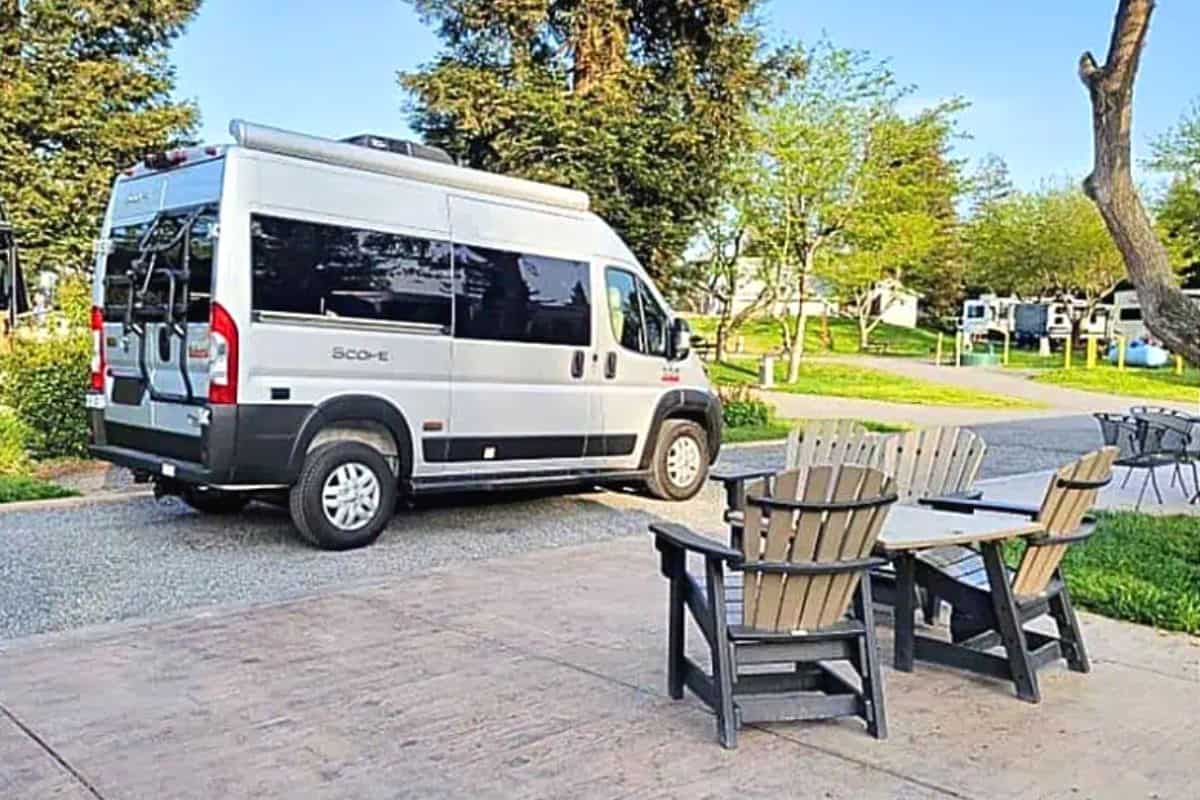RV beginners looking for their first rig are often overwhelmed by all the choices on a typical RV lot, ranging from small compact Class B RVs to massive luxury Class A motorhomes.
For more and more RV buyers though, the Class B RV and the simpler Camper Van hits the sweet spot between maneuverability and comfort.
If you’re considering one though, you more than likely have lots of questions, and one of the first is probably whether Class B RVs are worth the money.
Because let’s face it there’s nothing cheap about a Class B, as they usually start at around a $100K and quickly go up from there.
So to answer this question, we wrote this blog post to weigh both the pros and cons of the Class B motorhome, to help you decide whether the small RV is right for your camping needs, style, and budget.
What is a Class B RV?
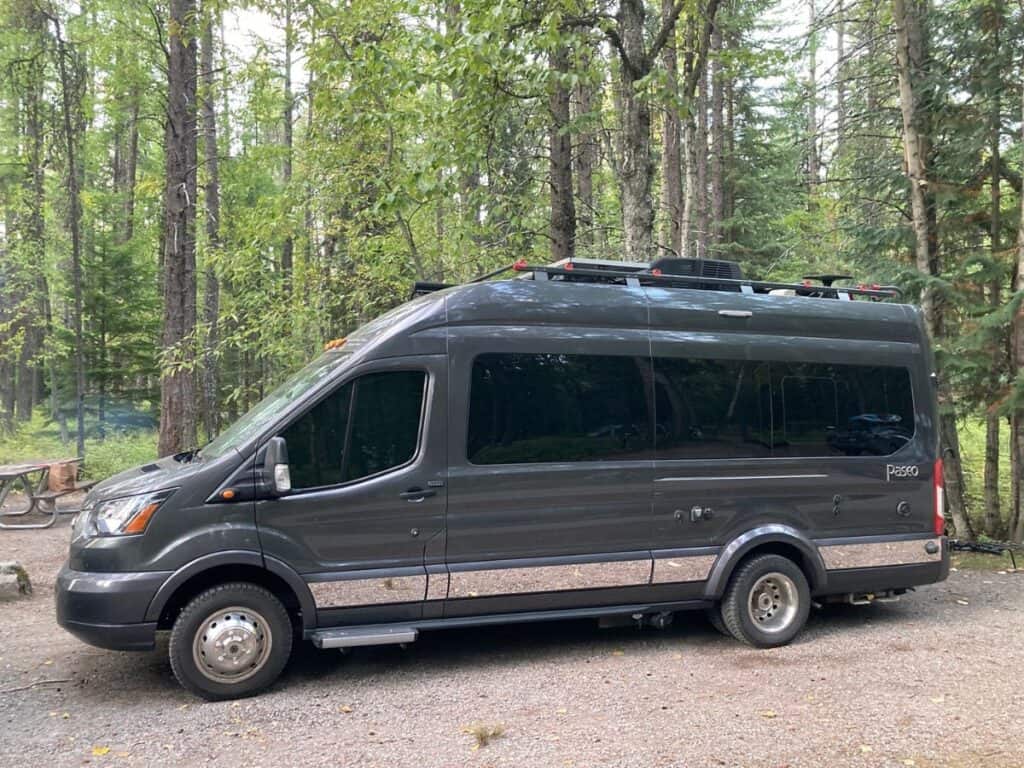
Built on van chassis, Class B RVs are compact, maneuverable motorhomes that provide a kitchen, bed, and sometimes a bathroom squeezed cleverly into a tiny floorplan.
They are smaller than the more spacious Class A, B+, and C motorhomes, allowing you to freely roam narrow backroads and easily park nearly anywhere.
The defining features of these nimble yet well-equipped camper vans include:
- Size and Base: Class B RVs typically range from 16 to 21 feet long with longer options maxing out around 24 feet. Built on a van cab chassis, popular bases include Mercedes-Benz Sprinters, RAM Promasters, and Ford Transits.
- Layout and Sleeping Capacity: The limited space means multi-purpose seats, beds, and benches fitting 2 to 4 people. Some have pop-up roofs to sleep more. Floorplans arrange the kitchen, bed, bathroom, and storage uniquely based on the model.
- Features and Amenities: Given clever storage solutions, most Class B’s contain fully functional bathrooms with toilets, showers, and holding tanks. They also have kitchens with fridges, sinks, microwaves, and or stoves along with heating, AC, fresh water, and more to enable self-sufficient camping.
What Sets Class B Motorhomes Apart?
The defining appeal of Class B motorhomes lies in their maneuverability and flexibility compared to larger motorhome alternatives.
But you have to be willing to downsize your living space and increase your budget to reap those rewards.
Major class B RV manufacturers include:
Which produce some of the most popular Class B RV models including:
- Thor Motor Coach Sequence
- Thor Motor Coach Scope
- Winnebago Travato
- Winnebago Sequence
- Winnebago Solis
- Winnebago Revel
- Airstream Interstate
- Airstream Rangeline
- Coachmen Nova
- Coachmen Galleria
- Jayco Swift
- Pleasure-Way Tofino
- Entegra Coach Ethos
- Roadtrek Zion Slumber
Pros of Buying a Class B RV
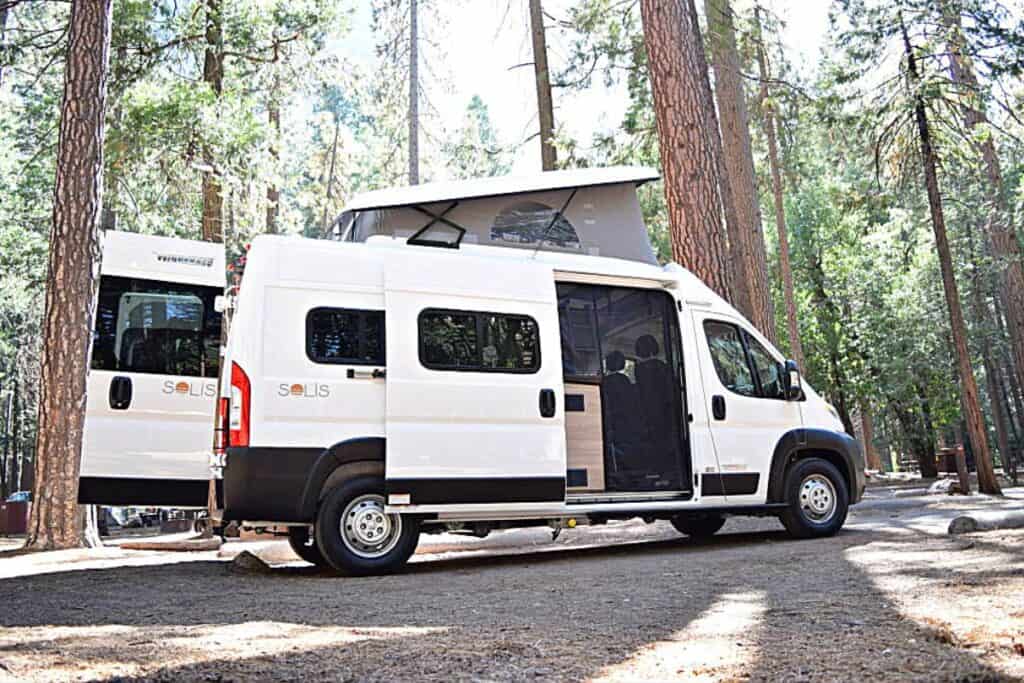
While giving up interior space, Class B RVs deliver exceptional flexibility, driving ease, and efficiency over their bulkier siblings.
Some of the top advantages include:
- Superior Maneuverability: The compact size allows Class B RVs to navigate narrow, winding roads with ease and fit in tiny campsites that larger RVs never could. From parallel parking in the city to making tight turns in a campground there is no easier RV to drive.
- Great Gas Mileage: Built on a van platform, you’ll enjoy much better fuel efficiency over sizeable motorhomes. Estimates typically range from 15 to 22 mpg which goes a long way in saving gas money, especially when you’re planning a long trip.
- Simple to Drive: Class B RVs operate similarly to driving a commercial van, so anyone comfortable behind the wheel of a large vehicle can manage them after a little practice. Also, there’s much less of an intimidation factor compared to large Class A motorhomes.
- Sleeps 2-4 Comfortably: Despite the cozy quarters, smart interior designs allow Class B floorplans to comfortably sleep a couple or small family once converted to bed mode at night. Some models even feature pop-up sleeping lofts for additional sleeping capacity.
- Full Bathroom and Kitchen Amenities: You can take care of necessities like cooking meals or using the bathroom without needing hookups or stopping by, as most models squeeze in a toilet, shower, fridge, sink, stove, and more.
Overall, while sacrificing living space, Class B RVs deliver fantastic freedom and flexibility for adventurous road trippers comfortable in tight spaces.
The upgraded driving experience and ability to access remote sites that larger RVs simply can’t manage make them a great option for a variety of RVers.
You just need to be comfortable with their quirks and limitations.
Cons of Class B RVs
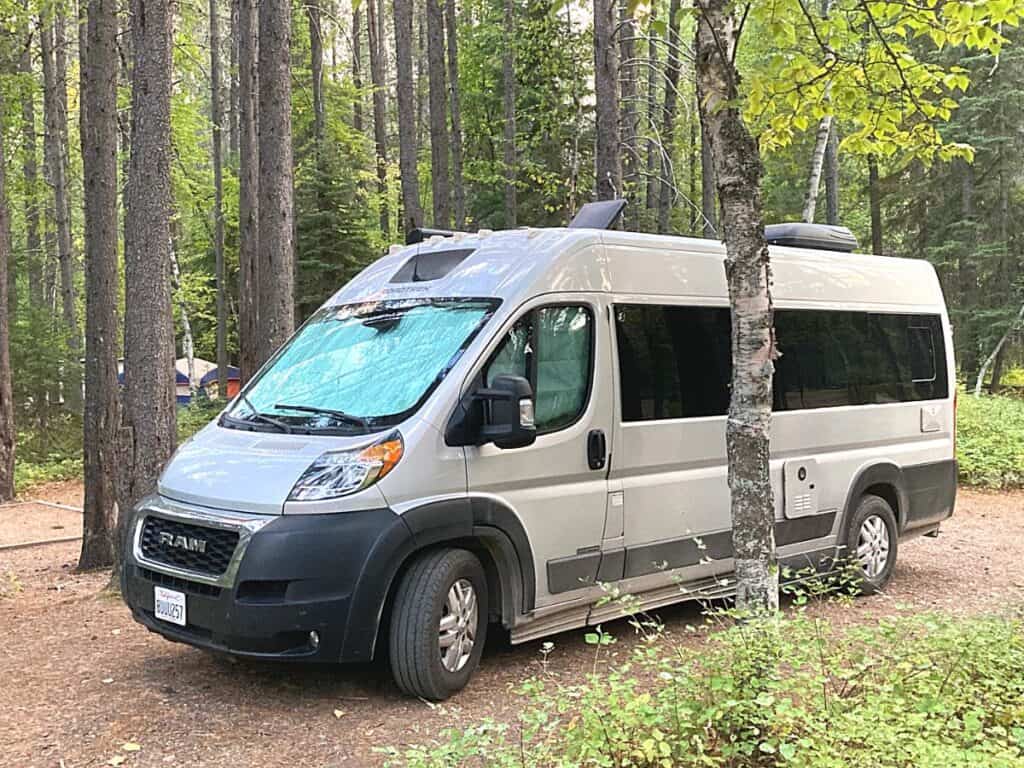
While Class B RVs unlock exceptional maneuverability and access, their compact shape inevitably involves some functionality compromises.
So be ready to embrace the below downsides:
- Tight Quarters: There’s no skirting around it, Class B living space is tight, especially with multiple people. The multi-purpose furniture leaves little open space and you must pack minimally and creatively to live comfortably.
- Very Limited Cargo Room: Don’t expect to load up a ton of gear and clothing. Storage is ultra-limited, so you’ll need to carefully pare down and use every nook and cranny efficiently.
- No Slide Outs to Expand Space: What you see floorplan-wise is what you get. Unlike larger motorhomes like Class B+ and Class C RVs, there are no slide-out room extensions. So you must make peace with cozy tight spaces.
- Usually Need Hookups for Extended Stays: Between small freshwater tanks, bathroom cassette limitations, and tighter spaces, enjoying lengthy off-grid dry camping can be challenging in a Class B, except for these unique options. So plan to connect to hookups or stop frequently to resupply and dump.
There’s no getting around the fact that you trade off living space, storage, and cargo capacity when traveling and camping in a Class B motorhome.
Which might be a deal breaker for some, especially if they plan to travel or live in the van long term.
However, for minimalist campers used to van life, or wanderlust adventurers who want to camp in the remote backcountry, the tradeoffs may be worth it.
The key is to set proper expectations.
If you do that, downsizing may not be so dreadful after all, as it lets you get closer to nature, which is the whole point of camping and traveling in an RV in the first place.
Cost Considerations for Class B RVs
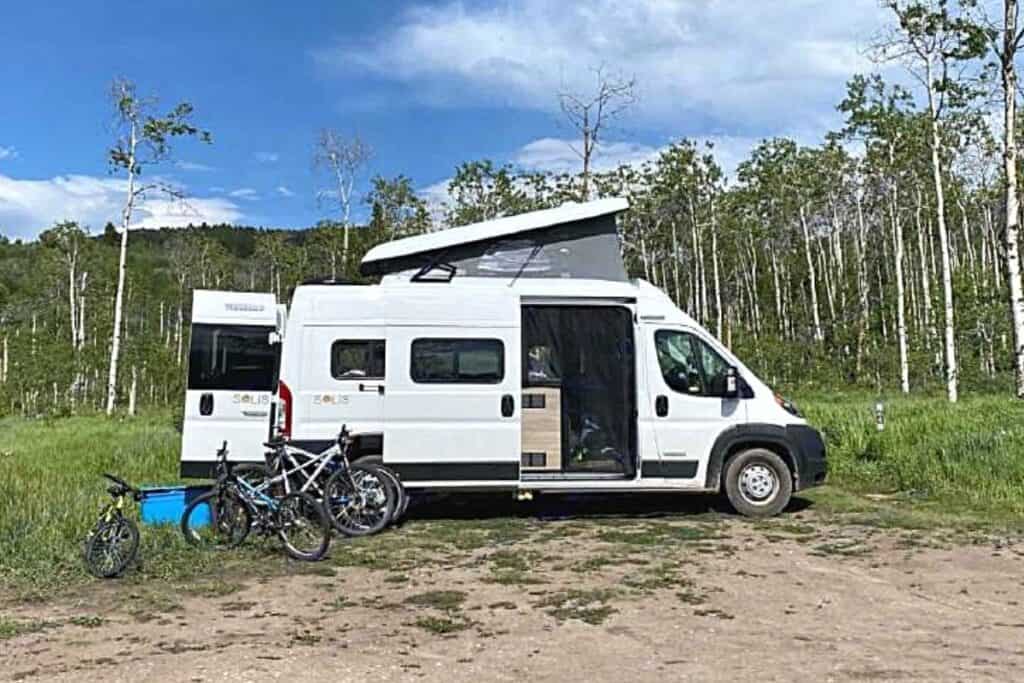
Class B RVs command higher price tags than Class C motorhomes or trailers, both to purchase and operate over time.
So it’s important when budgeting, to consider every aspect of Class B RV ownership.
Upfront Purchase Price
Expect to spend anywhere from $100,000 up to $150,000+ for a brand new Class B RV, depending on the chassis, features, fit, and finish.
For example, baseline models of the Winnebago Travato start around $125,000 but can exceed $150,000 when fully loaded with high-end features.
While the Mercedes Benz-based Coachmen Galleria ranges from $150,000 to $170,000 out the door.
Even entry-level options like the Pleasure-Way Tofino ring up at around $95,000.
The sticker shock continues when examining diesel Sprinter options and luxury-focused Class B choices from Airstream, which can approach jaw-dropping totals of over $200,000.
Pre-owned models offer the most budget-friendly alternatives in the $30,000 to $60,000 range, depending on factors like age, mileage, condition, features, and brand reputation.
Crunch the numbers carefully, as all-in purchase prices can easily pass $100,000 on new Class B RVs once taxes, fees, financing charges, and upgrades are included.
For even more Class B motorhome pricing, check out our blog post, “What Does a Class B RV Cost? (18 Examples)“.
Financing Options
Given the steep sticker prices, some form of financing is essential for most buyers to afford Class B ownership.
Luckily though several options exist to finance Class B motorhomes, however, this will significantly increase the cost of the Class B van over time.
- Dealer Financing: Most RV dealers offer in-house lending or partnerships with banks/credit unions that provide attractive rates and long repayment terms tailored specifically to RVs. This also allows wrapping financing into one tidy monthly payment.
- Outside Lenders: National and regional banks, credit unions, and specialized RV lenders like Trident Funding offer financing packages for RVs. Expect options like secured loans, personal loans, home equity loans, or RV-specific loans.
- Terms: Expect repayment term lengths of around 3 to 7 years, however, they can be as long as 10 years, with RV loan rates ranging from 7 to 11 percent. The longer the term, the lower the monthly payment at the expense of higher interest charges over the full period.
Compare multiple financing sources on factors like rates/APRs, down payment needs, term flexibility, and prepayment policies. Securing pre-approval from your top 1 to 2 picks allows you to negotiate the purchase price from a position of confidence.
Fuel Costs
One of the key advantages of Class B RVs is their increased fuel economy versus larger motorhomes, like Class A and Class C RVs.
As they often offer fuel economy that ranges from 15 to 22 miles per gallon.
But gas still factors significantly into ongoing ownership costs of a Class B RV.
To illustrate this, let’s assume 17 mpg combined city/highway and $4 per gallon for gas:
- Driving 5,000 miles per year equates to burning through approximately 294 gallons annually. At $4 per gallon, that’s $1,176 per year on fuel.
- Driving 10,000 miles per year doubles gas usage to around 588 gallons annually, making yearly fuel costs about $2,352.
- For avid explorers anticipating 15 to 20k miles of travel, gas bills can rapidly approach $5,000+ per year.
Operating Expenses
Beyond the considerable gas costs, Class B RVs also carry other operating expenses that you need to budget for including:
- Registration/Plates: Expect annual registration fees dependent on state and weight class to range from $250-500+ per year.
- Insurance Premiums: Special RV policies or riders are required, running $1,000 to even $4,000+ per year. Get quotes to accurately gauge yearly costs.
- Routine Maintenance: While using familiar van platforms, complex water, electrical, and waste systems make tune-ups and repair costs steep – budget $2,000+ per year.
- Storage Expenses: If not parking on your property, secured RV lots average around $100-$150 monthly for covered storage near urban areas.
- Emergency Repairs: Unexpected part failures like refrigerators, plumbing, ACs, furnaces, or appliances average $1,500 per incident. So having a rainy day fund to pay for unexpected expenses is a must.
Is a Class B RV Worth the Money?
With their steep price tag, limited interior space, and lack of storage, it’s a fair question to ask, whether Class B RVs are worth the money.
And whether their benefits outweigh their very real-world downsides.
In the end, whether purchasing a Class B RV makes sense for you comes down to personal travel preferences and budget.
If you’re still on the fence though, we want to leave you with these final thoughts on Class B motorhomes:
- Worth It If Compact Agility Is Essential: For RVers who prioritize nimble driving and parking above all else to reach secluded sites and roam freely, Class B’s provide huge advantages larger RVs simply can’t match.
- Best For 1-2 Travelers: The cramped quarters mean they work much better for solo travelers or couples rather than cramming in families with kids or groups.
- Test First to Make Sure: Rather than taking the plunge sight unseen, try renting a Class B RV first through a peer-to-peer rental marketplace like RVshare or Outdoorsy. Testing RV life in a Class B compact motorhome allows you to know for sure whether the snug tradeoffs are worth it.
While these tiny campers have a lot of benefits, unless you truly need the most compact RV, for many the disadvantages will often outweigh the advantages.
Especially when you factor in that Class B+ and Class C RVs still offer a very compact and nimble RV platform while offering more interior space and amenities, often at a lower cost.
For a select group of intrepid, minimalist campers though, the sacrifices and investment make it all worth it, as there is truly no motorhome on the market quite like a Class B RV.
Alternatives to Look At Beyond Class Bs
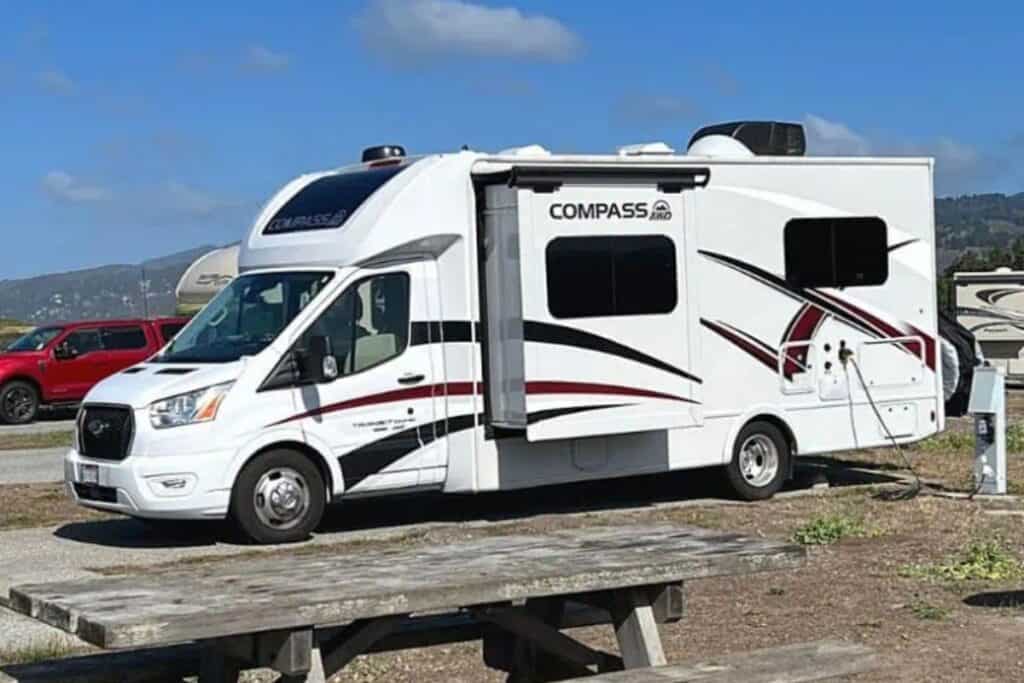
If you decide Class B RVs are not the right fit for you, don’t worry all is not lost, as there are several other small motorhome options to choose from that might be a better fit for you and your family, including Class B+ RVs, Class C RVs, and Camper Vans.
- Class B+ RVs: Somewhere between a Class B and C lies the unofficial Class B+ category, typically ranging from 25 to 30 feet. These super-sized camper vans provide more interior living space through extended bodies while still retaining ease of driving and parking. Great for those torn between roominess and maneuverability.
- Class C Motorhomes: Splitting the difference between Classes A and B, Class C RVs build living quarters over a truck chassis like the Ford E-Series. While larger at typically 25-35 feet, they still drive well and offer ample sleeping and storage, often at a lower cost. Brands like Winnebago, Thor, and Jayco make quality Class Cs.
- Camper Vans: For the most budget-friendly option under the Class B category, customizable camper vans built from stripped-down cargo vans have become popular. In fact, they’ve become so popular there’s are whole movement around the RV class, called “Van Life“. While you likely won’t get a bathroom or as many features, they provide basic living necessities on a flexible platform.
Class C motorhomes allow you to save money while still accessing small sites and standard roads. For RVers torn between space and agility, Class B+ models offer a nice middle ground. And camper vans provide the most frugal option in a customizable package.
While Class B’s provide the ultimate agility, other RV classes balance cost, space, and flexibility in their own ways.
Got More Questions About Class B RVs? We’ve Got More Answers…
Recent Posts
47 RV Storage Ideas to Maximize Your Space for Compact Living
Camping and living in an RV is an incredible adventure, but it comes with its fair share of challenges, particularly around storage, due to the lack of space. Because of this, it's a must to make...
Are you looking to give your RV a cozy, rustic makeover? If so, farmhouse decor is the perfect style to transform your camper into a warm and inviting home on wheels. In this blog post, I'll...

